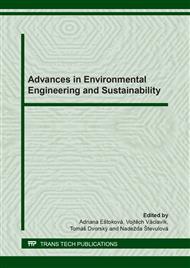p.3
p.10
p.23
p.31
p.39
p.46
p.53
p.59
Evaluation of some Specific Effects of Pavement Kerbs Containing Cement Kiln Dust on Soil and Lawns - The First Experimental Phase
Abstract:
This article deals with the evaluation of the effects on soil caused by leaching of materials from curbs, which were made using cement kinl dust from the cement plant Horné Srnie. Attention is also paid to a condition of the grass growing near the curbs. These laboratory curbs (bricks) were produced with addition of cement kiln dust and fly ash after denitrification by the SNCR method in alkaline activated materials based on blast furnace slag granules activated by anhydrous disodium metasilicate During the experiment the effects of laboratory curbs on grass growth in testing flower pots were investigated. The aim of the experiment was to obtain a product suitable for curbs with supposed direct contact with the soil. The experiment dealt with the properties of laboratory curbs stored in situ as well as with their influence on the soil and the effect of leached substances on the surrounding grass. The main part of the experiment was conducted in situ.
Info:
Periodical:
Pages:
23-30
Citation:
Online since:
April 2020
Authors:
Keywords:
Price:
Сopyright:
© 2020 Trans Tech Publications Ltd. All Rights Reserved
Share:
Citation:


